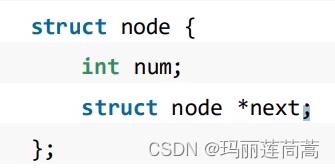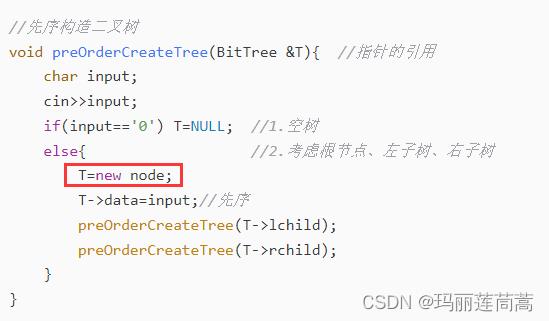算法—— 链表类问题
Posted 玛丽莲茼蒿
tags:
篇首语:本文由小常识网(cha138.com)小编为大家整理,主要介绍了算法—— 链表类问题相关的知识,希望对你有一定的参考价值。
一、基本操作
1. 三种常见考点

单链表进行排序时,一定用冒泡排序。只交换两个节点的data就行了,不用发生指针的移动。
2. 链表类的都需要定义结构体

2)在二叉树中
这里结合二叉树学习的,再来复习一下结构体的规则:
typedef struct node
char data;
struct node *lchild,*rchild;
*BitTree; //和【int *p】一样,*在指针变量p的前面
//同理,node和BitTree尽量不要重名,和【int】与【p】的关系是一样的
3. 创建链表
1)节点
在C++中创建一个节点用new 结构体名()或者new 结构体名。
struct node*head;
head=new node(); //或者head=new node;
在C语言中
struct node *head;
head=(struct node*)malloc(sizeof(node);
这里的“head=”是指向的意思,不要认为此时head就是头结点,它只是头结点的指针,但是它可以操纵头结点。对于其他指针也一样,比如now指针,它并不是当前节点,只是指向当前节点,但是它可以操纵当前节点。

2)在二叉树中
复习了链表以后,才理解了创建二叉树时的new node操作—— 创建一个新结点,让结构体指针指向这个新结点

3)尾插法创建链表
struct node *head,*tail,*now;
head=new node(); //创建头结点
head->next=null; // 避免野指针
tail=head; //此时头结点就是尾结点
for(int i=1;i<=一共有多少个;i++)
now=new node();
tail->next=now;
tail=tail->next;
tail->next=null;
4)头插法
我不喜欢用头插法
二、例题
2.1 约瑟夫环(猴子报数)

输入
10
2 5
输出
6,1,7,3,10,9,2,5,8,4
# include<bits/stdc++.h>
using namespace std;
struct node
int num;
struct node *next;
;
int main()
int totalMonkey; //猴子总数
int start; //从第几只猴子开始
int number; //报的数
struct node *head,*tail,*now,*pre;
/*---------用户输入------------*/
cin>>totalMonkey;
cin>>start;
cin>>number;
/*----------创建约瑟夫环-------*/
head=new node(); //创建头结点
head->num=1;
head->next=NULL;
tail=head;
for(int i=2;i<=totalMonkey;i++) //尾插法创建链表
now=new node();
now->num=i;
tail->next=now;
tail=now;
tail->next=NULL;
tail->next=head;//连成一个环
// /*------约瑟夫环输出测试-------*/
// for(int i=1;i<=totalMonkey;i++)
// cout<<head->num<<" ";
// head=head->next;
//
/*-----------游戏过程---------*/
//先找到最开始报数的猴子,用now标注
now=head;
pre=tail; //pre在now前面一个
for(int i=1;i<=start-1;i++)
now=now->next;
pre=pre->next;
while(now->next!=now)
//报数ing
for(int i=1;i<=number-1;i++)
now=now->next;
pre=pre->next;
//此时now指向的猴子结点退出
cout<<now->num<<",";
pre->next=now->next;
now->next=NULL;
now=pre->next;
cout<<now->num; //最后一只猴子
return 0;
发现自己深入理解一下结点指针和结点的关系后,写起代码来比以前简洁多了!
以上是关于算法—— 链表类问题的主要内容,如果未能解决你的问题,请参考以下文章